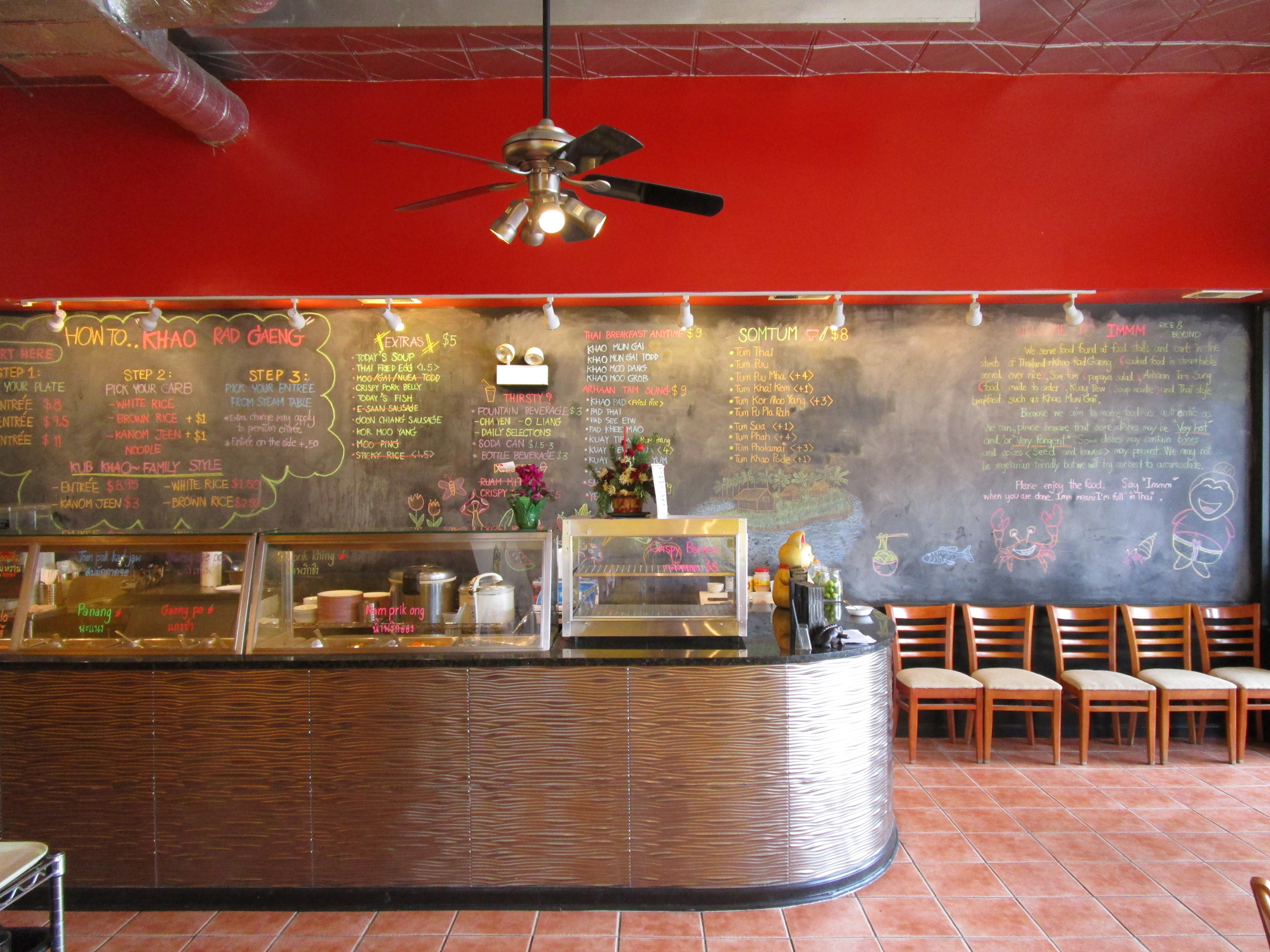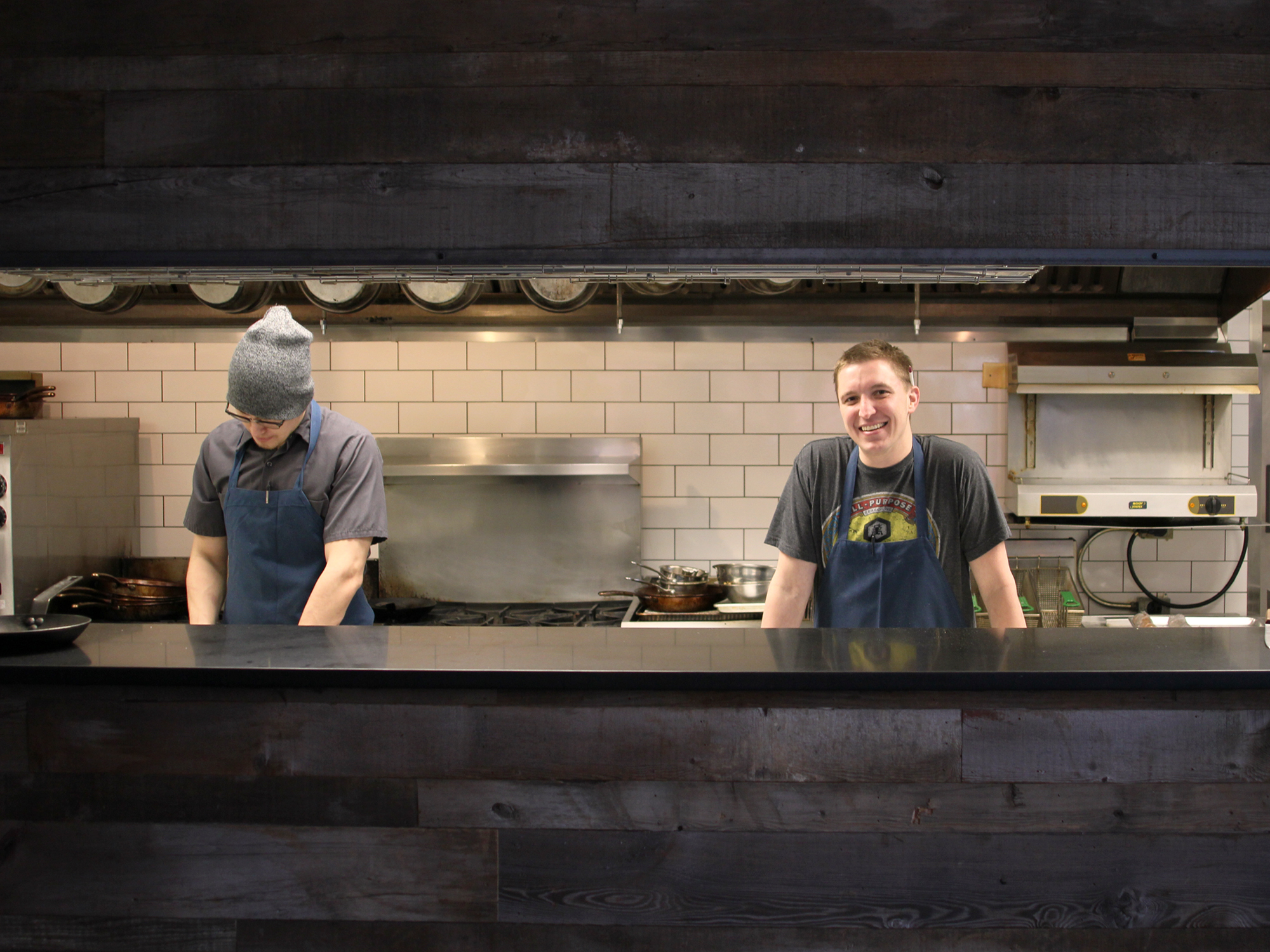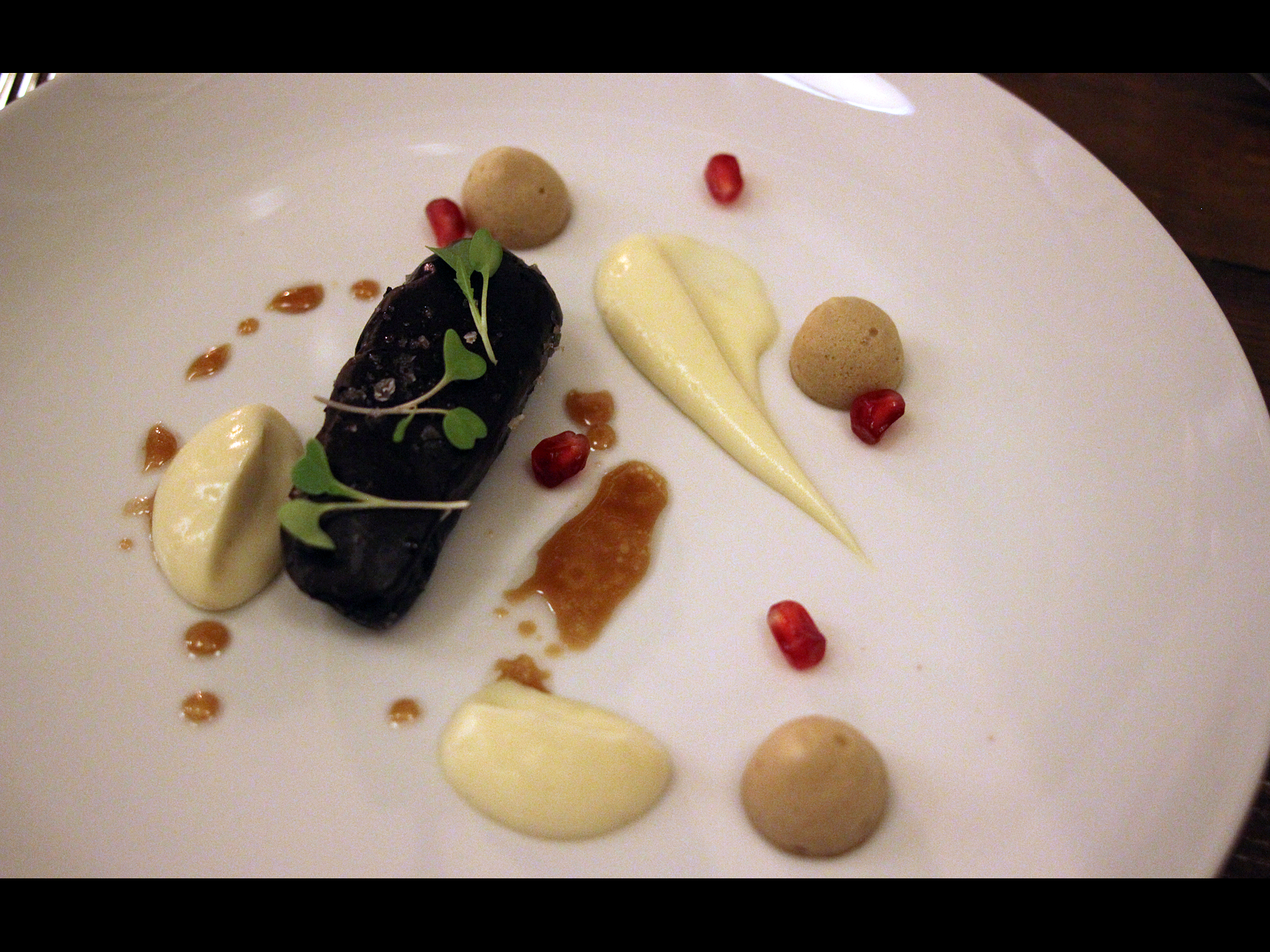FRIDAY AFTERNOON BROUGHT THE ANNOUNCEMENT that any observer had been expecting in the months following the death of chef Homaro Cantu last April—Moto had been purchased by Grant Achatz and Nick Kokonas’ company, and its last day of service will be Valentine’s Day, February 14. This was no surprise because the Alinea group had already acquired Moto’s sibling iNG, the space of which will become The Roister sometime this year, and they’ve long indicated their interest in that entire corner of Fulton Market. In their announcement, Achatz and Kokonas declined to comment on what the replacement in the space would be, saying “Now is not the time to talk about our plans for the space… let’s rather raise a toast to Moto and celebrate what they have accomplished.”
It’s a poignant end at the hands of a rival to a restaurant that was a leader in so many parts of our food scene over the last, intensely creative decade. Moto was, first, a pioneer in what has become the hottest neighborhood of our food scene, the epicenter of what’s hip and interesting in Chicago, the West Loop district (of which Fulton Market and West Randolph are both parts). Moto wasn’t the first place to open in that area—I’m pretty sure that Follia, the hip Italian place with model-waitresses where Next is now, was there first, and so was the bar (the name escapes me*) where The Aviary is, but probably only by some months. But I can remember sitting outside at Follia, the smell of chicken runoff and bleach in the air as an early condo buyer struggled to get her Peg Perego stroller up the jagged cliffs of craggy concrete steps to the sidewalk at the corner, and thinking—this is what a hot neighborhood looks like in the process of being born. This is where a great urban romance, like that of Michael Douglas and Glenn Close, could begin.
Every neighborhood like that needs both avant-garde art galleries and hip restaurants, and Moto managed to be both at once. Grant Achatz had already introduced aspects of molecular gastronomy and general magic show-geewhizzery to dining at Trio in Evanston, but being in a cozily familiar suburban restaurant, it was a gentle introduction. Moto was the first place to jump with both feet into being the future, with its art gallery-hushed room and the hints, only partially seen from the dining room, of weird science gadgetry like its inkjet printers and industrial laser. The printed, edible menu (which you could eat but, I can say personally, you really didn’t want to), the boxes with things cooking mysteriously inside them delivered to the table, the dishes disguised to look like something completely different, like the “Cuban cigar” of pulled pork served in an ashtray—here was a whole different kind of dining that instantly divided the world into those who got it and those who didn’t.
There’s an old LTHForum thread where you can see me struggling to get it. Not long after Moto I went to a forgotten, much more conventional fine restaurant called Pluton, and I remember finding its skilled traditional comforts a relief after Moto. Until a week passed, and I’d forgotten that I had eaten at Pluton, but was still wrestling with Moto—could a chef do these things, should he? Was it all an expensive con? The food was good enough that I didn’t quite think that, but the question was there, hanging over all of these places, as it does to this day. Heather Shouse had a pretty prescient piece in the Tribune just a couple of months after Moto opened which makes it clear that “Is this for real?” was the question on many lips:
You will never meet a foodie without an opinion of the new avant-garde gastronomy. No one dines at these restaurants and walks out shrugging that it was so-so. They either love it or hate it, with little in between.
The other thing that was fresh and novel then was that the chefs not only played with their food—they played with us. They responded to diners; in that LTHForum thread, Cantu himself turns up to debate his cuisine with us, and Graham Elliot, then of Avenues, chimes in to defend what he’s doing. One dish was inspired by a group of diners coming into the restaurant bearing a Tupperware container of raccoon from a small town event in Wisconsin; Cantu was given it and whipped up a dish taking the form of road kill.
You have to wonder if we’ll ever see such experimentation, such freethinking inventiveness, in the West Loop again.
Avant-garde food itself was, in some ways, a small town then. But Fulton Market and the surrounding area grew—The Publican came, and Next and The Aviary, and many smaller fish; the neighborhood that was once a ghost town after 5 is now impossible to park for dinner in. And I have to admit that over time, as the options exploded, I heard people in Chicago talk about going to Moto less and less. It became one of those things you did while visiting from out of town, not something locals did nearly as much.
It’s hard to pinpoint exactly why, from a pretty equal start, Alinea and Next became the focus of culinary attention and Moto something of a runner-up; winning three Michelin stars obviously validated Alinea, while Moto was shunned the first year (it eventually won one), but Next has been successful despite being ignored by Michelin for its entire existence. Maybe it’s best to say that Alinea has been much more disciplined about communicating its aspiration to be the very best dining experience in Chicago, where Moto always communicated that it was an experience—but often of extraneous things like growing its own food, running its kitchen according to an elaborate control center (which may have been a put-on), or solving obesity with the Miracle Berry. Fun to read about, but maybe something you were reluctant to actually pay for yourself after the first time.
And you have to wonder if we’ll ever see such experimentation, such freethinking inventiveness, in the West Loop again. Maybe from Achatz and crew, who have a blank check from upscale diners to do whatever they want, but the rise of steak joints and pizza parlors in the neighborhood suggest that we’re no longer looking for the places with Class IV lasers. It’s the fate of every avant-garde to run out of things to be the advance guard of; parts of that movement aren’t avant-garde any more, they’re just dining in 2016. Some of the artsy touches are in everybody’s repertoire now, and no one opens $300 gastronomic-art destinations any more (except maybe a hotel with a name like Trump on it); young chefs full of new ideas open $150 intimate tasting menu experiences, the storefront theater of dining. The spirit of Moto will be in a place like the upcoming Oriole, but the big money will be spent by red meat businessmen at Swift & Sons. Or on 50-year-old Fernet at the Milk Room (that’s where I spent it, anyway).
In any case, the next Moto, when it opens, won’t be among the chicken places on Fulton Market—more likely Bridgeport, or Lincoln Square, or some other neighborhood that still seems culinarily dead or a no-go until a restaurant that changes everything gets there. (Cue New York Times piece on dining in Cragin in 2019.) When you go to whatever will be in Moto’s space, raise a glass—or a Porthole or a Cuban cigar or something—to its memory and what the neighborhood once was, and imagined becoming.
* Fulton Lounge, thx Rupert Vaughan
Michael Gebert is the editor of Fooditor.
COVER IMAGE: Edsel Little
Latest
Join the Discussion
After you comment, click Post. If you're not already logged in you will be asked to log in or register with Disqus.







Nicely put. Chef Cantu was many things but complacent and boring were never among them.
The “Control center” was absolutely true–an elaborately build excel sheet in concert with constant server communication and a couple of well-placed webcams (just in the BOH) allowed the entire kitchen to track each diner–allergies, wine pairings or cocktails, pregnancies or dietary restrictions, and on and on. Chef Cantu was one of the few chefs who truly believed in providing power and knowledge to every single member of his team, from the GM and sommelier to the line cooks to the dishwashers and glass polishers.
I think the point of divergence between moto and Alinea was just as you said–Alinea was focused on an all-around insanely high-end dining experience, and moto (by comparison sometimes) could feel…a little amateurish? Whimsy taken too far, or exploration that outstripped solid research.
It’s sad to see it go; I remember eating there shortly after they opened and being completely floored by the food and the wild ideas on display. As many other writers have pointed out the food wasn’t always delicious (the notorious “black course” comes to mind) but I still remember some bites and dishes that seared themselves into my mind forever. The Snow Crab with Passion Fruit and Shiso was one; the colors and flavors were in another realm of conceptual cuisine.
Thanks for posting this.
[…] The late Homaro Cantu’s restaurant closes February 14, bringing a pioneering history to an end. Fooditor tells its tale. […]
[…] The late Homaro Cantu’s restaurant closes February 14, bringing a pioneering history to an end. Fooditor tells its tale. […]
[…] The late Homaro Cantu’s restaurant closes February 14, bringing a pioneering history to an end. Fooditor tells its tale. […]
[…] It’s hard to imagine the West Loop before it was a foodie hotspot, but Moto was one of the first cool restaurants to open in the neighborhood. As it prepares to close on Valentine’s Day, Fooditor gives it recognition for changing the city’s food scene. [Fooditor] […]